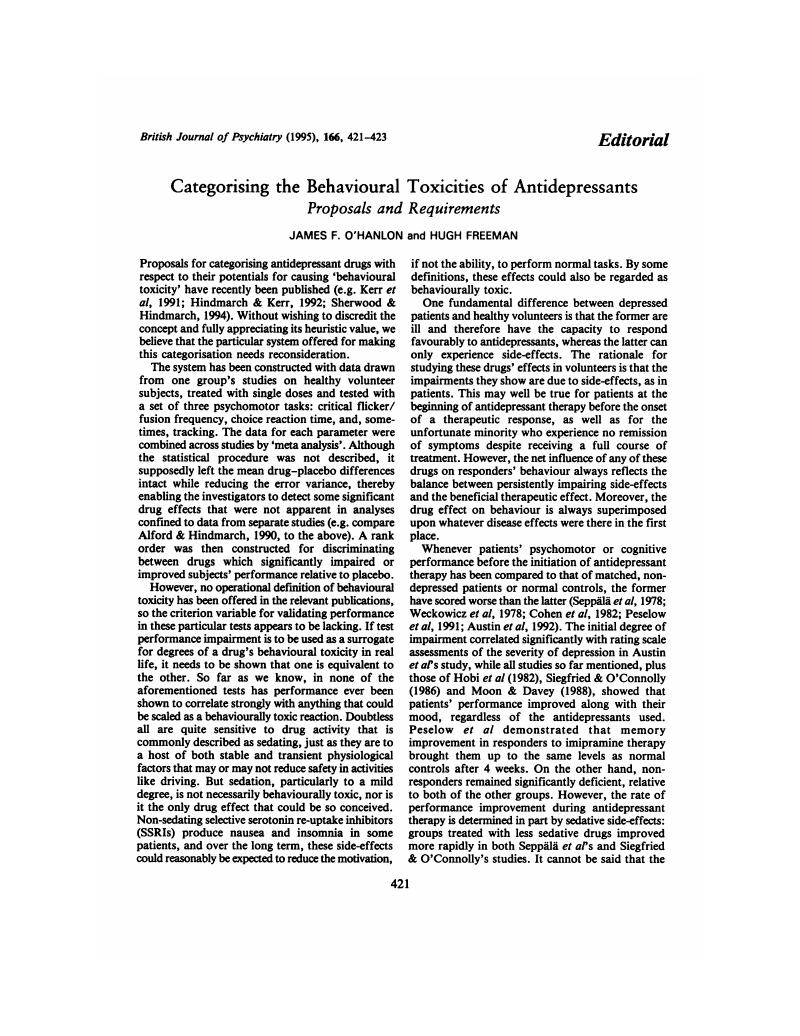Crossref Citations
This article has been cited by the following publications. This list is generated based on data provided by Crossref.
Kerr, J. S.
Fairweather, D. B.
and
Hindmarch, I.
1995.
Behavioural toxicities of antidepressants.
British Journal of Psychiatry,
Vol. 167,
Issue. 3,
p.
413.
Freeman, H.L
1997.
Advantages and limitations of the concept of antidepressant therapy.
European Neuropsychopharmacology,
Vol. 7,
Issue. ,
p.
S315.
Attarian, Hrayr P.
2000.
Helping patients who say they cannot sleep.
Postgraduate Medicine,
Vol. 107,
Issue. 3,
p.
127.
Moller, Henry J.
Shapiro, Colin M.
and
Kayumov, Leonid
2006.
Sleep and Sleep Disorders.
p.
146.
Moller, Henry J.
and
Lam, Shirley
2008.
Sleep and Quality of Life in Clinical Medicine.
p.
107.




eLetters
No eLetters have been published for this article.